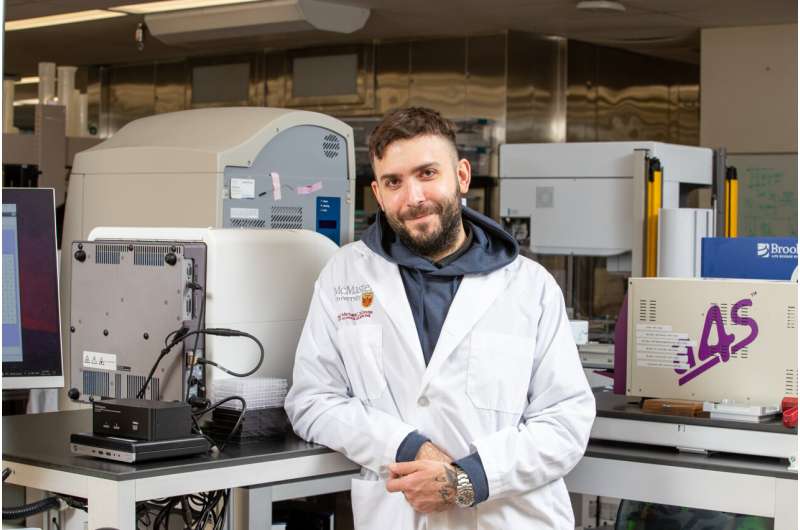This article has been reviewed according to Science X's editorial process and policies. Editors have highlighted the following attributes while ensuring the content's credibility:
fact-checked
peer-reviewed publication
trusted source
proofread
Researchers invent artificial intelligence model to design new superbug-fighting antibiotics

Researchers at McMaster University and Stanford University have invented a new generative artificial intelligence model that can design billions of new antibiotic molecules that are inexpensive and easy to build in the laboratory.
The worldwide spread of drug-resistant bacteria has created an urgent need for new antibiotics, but even modern AI methods are limited at isolating promising chemical compounds, especially when researchers must also find ways to manufacture these new AI-guided drugs and test them in the lab.
In a new study, published in the journal Nature Machine Intelligence, researchers report they have developed a new generative AI model called SyntheMol, which can design new antibiotics to stop the spread of Acinetobacter baumannii, which the World Health Organization has identified as one of the world's most dangerous antibiotic-resistant bacteria.
Notoriously difficult to eradicate, A. baumannii can cause pneumonia, meningitis and infect wounds, all of which can lead to death. Researchers say few treatment options remain.
"Antibiotics are a unique medicine. As soon as we begin to employ them in the clinic, we're starting a timer before the drugs become ineffective, because bacteria evolve quickly to resist them," says Jonathan Stokes, lead author on the paper and an assistant professor in McMaster's Department of Biomedicine & Biochemistry, who conducted the work with James Zou, an associate professor of biomedical data science at Stanford University.
"We need a robust pipeline of antibiotics and we need to discover them quickly and inexpensively. That's where the artificial intelligence plays a crucial role," he says.
Researchers developed the generative model to access tens of billions of promising molecules quickly and cheaply.
They drew from a library of 132,000 molecular fragments, which fit together like Lego pieces but are all very different in nature. They then cross-referenced these molecular fragments with a set of 13 chemical reactions, enabling them to identify 30 billion two-way combinations of fragments to design new molecules with the most promising antibacterial properties.
Each of the molecules designed by this model was in turn fed through another AI model trained to predict toxicity. The process yielded six molecules that display potent antibacterial activity against A. baumannii and are also non-toxic.
"SyntheMol not only designs novel molecules that are promising drug candidates, but it also generates the recipe for how to make each new molecule. Generating such recipes is a new approach and a game changer because chemists do not know how to make AI-designed molecules," says Zou, who co-authored the paper.
More information: Nature Machine Intelligence (2024). DOI: 10.1038/s42256-024-00809-7. www.nature.com/articles/s42256-024-00809-7
Journal information: Nature Machine Intelligence
Provided by McMaster University





















